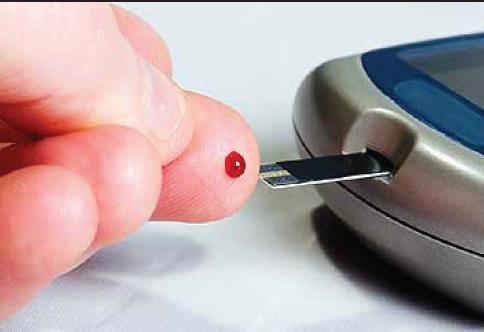
17 minute read
The Quarantine Conundrum
from Issue 12
As we are presented with the unique challenges and situations of healthcare, the intrepid innovators of new solutions do us an invaluable service. Those who engage us in dialogue, addressing the complexities of these issues, form the framework of our understanding of these problems. The solutions to modern and unfamiliar problems are rooted in discussion and the development of ideas is key to their eventual implementation. This issue of the Meducator highlights several of such innovative dialogues. Quarantining is a protocol that has been around for many years, yet privacy laws and personal rights has forced the issue into unexpected directions. Alexandra Perri guides us through some of the core problems, and how we might approach quarantine given these new circumstances. Issues of privacy and ethical responsibility concern Mike Herman’s article also, as he explores some of the legal issues involved when an individual fails to disclose their HIV-positive status to sexual partners. A solution to the increasing burden of patients on hospital resources is explored by Sarah Mullen, who explains the concept of telemedicine and demonstrates how it is being applied in Ontario to relieve that burden. On an individual level, Jennifer Gao, Christine Ibrahim, Jennifer Lee, Christina Martorelli, and Penny Yin describe the devastating disease of Hutchinson-Gilford Progeria Syndrome, how it can adversely influence an individual’s life, and what breakthrough research is being done to help those affected. Jonathan Liu and Noemie Dell focus narrower, showing how oncolytic viruses display promising advances in cancer therapy. Together, these articles represent a broad range of dialogues taking place to help explain the very difficult challenges in healthcare today. While these articles are the mainstay of the magazine, our website, www.meducator.org, contains regularly updated content. Every week new advances in medical research and health ethics are highlighted in MedBulletins, packaged into concise, digestible lengths. These MedBulletins are a great way to keep on top of interesting medical news as well as inform yourself of ethical debates. For an even quicker read, check out our MedWire section, where two-sentence summaries give a taste of the very latest in health news. Both sets of articles are available to browse on our website, and can also be subscribed to via RSS. We are proud of our website content, and hope that you will enjoy the continual updates. As this is the last issue for which I will serve as President, I would like to take a moment to recognize the exceptional individuals I have had the pleasure of working with. Thanks to Crystal Chung – your leadership and responsibility have proved that I really don’t need to be there at all. Thank you to our VP Editors, Harjot Atwal, Harman Chaudhry, Jacqueline Ho, Alexandra Perri, Jonathan Liu, Siddhi Mathur, Sarah Mullen, Navpreet Rana, and Jeannette So, for maintaining the high quality of our publication, and keeping everything on track. Thanks to Avinash Ramsaroop for maintaining the website – your work has been important for the new direction of the magazine. Thank you to Stephanie Low for responsibly managing the entire visual layout of the magazine, as well as Ran Ran and Andrew Yuen for assisting her. Lastly, thanks to our Junior Editors: Veronica Chan, Randall Lau, Simone Liang, and Fanyu Yang; I am tremendously proud of the effort you’ve put in, and you should be as well. We would not have been so successful this year without your dedication. I can’t wait to see where you take the Meducator next. As always, enjoy this issue. Please visit our website, www.meducator.org, and leave us a comment, submit an article idea, or check out our continually updated MedWire and MedBulletin sections.

Advertisement
Sincerely,
Tyler Law B.H.Sc. III
Meducator Staff

President Tyler Law
Vice-President Crystal Chung
VP Medical Research and Health Ethics Harman Chaudhry Jacqueline Ho Jonathan Liu Siddhi Mathur Sarah Mullen Alexandra Perri Navpreet Rana Jeannette So
VP Layout Stephanie Low
VP Web Design Avinash Ramsaroop
VP Public Relations Harjot Atwal
Junior Executives Veronica Chan Randall Lau Simone Liang Ran Ran Fanyu Yang Andrew Yuen
Post Graduate Editors
Dr. Dale Guenter, M.D., MPH
Dr. Robert A. Hegele, M.D., FRCPC, FACP
Dr. Brian Lichty, Ph.D.
Dr. Lisa Schwartz, MA, Ph.D.
Dr. Jim Bolton, M.D.
Researchers in the UK have developed a TB blood test that provides results within 48 hours, and with 99% accuracy when used with the tuberculin skin test. The new blood test specifically recognizes the immune response produced by TB infection, and has been tested on 389 patients in the UK. Doctors hope that once this test is licensed, it can be used to diagnose and treat patients more quickly.
A study conducted at the
University of Western
Australia suggests that lower levels of testosterone in elderly men may make them more susceptible to depression. In the research, approximately 4000 men over the age of 70 gave blood samples and participated in other tests to identify depression. Though more studies have to be done for verification, the study suggests that depression in elderly men may be treated by increasing their testosterone levels.
A five year study conducted by the University of Minnesota has found that individuals who had breakfast in the morning weighed 5 pounds less than those who skipped breakfast. People who have breakfast are more active and alert throughout the day and burn more calories. Though teenage girls were most likely to skip breakfast, in fear of gaining weight, this study supports the idea that people who eat breakfast are healthier than those who do not.

A team of researchers from the United States National Institute of Health suggests that they have discovered a possible reason to explain why the influenza virus is more prevalent in cold conditions. Essentially, the virus particles become surrounded in a lipid-like coat which solidifies, providing protection during transmission from host to host. Pathogenesis begins inside the respiratory tract where the warmer internal temperature melts the rubber-like coating.
Minute magnet particles
produced by bacteria are found to have promising clinical applications in cancer treatment. These particles can be guided towards sites of tumour growth magnetically, and the induction of an opposite magnetic field would subsequently cause the temperature of the nanomagnets to rise. It is suggested that the heat emitted from this process can eradicate cancerous cells. A recent report from the
World Health Organization
insinuates that 5% of the 9 million global diagnoses of tuberculosis are characteristically multidrug resistant. A more severe variety, known as the extremely drug-resistant tuberculosis, is also becoming increasingly prevalent worldwide. This form has proven to be nearly incurable and shows no response to both firstline and secondary antibiotic treatments.

The medical ethics board
of the United Kingdom has recently granted approval for full facial transplants to be performed. Although partial facial transplants have been successfully performed in France since 2005, the notion of full transplants has always been intensely controversial because of its implications to adopting a key component of a deceased individual’s identity. Long-term psychological or medical consequences of full facial transplants are currently unknown. The latest study conducted by the University of Edinburgh has found that one’s genes exhibit control over approximately half of one’s personality traits, which account for happiness. External factors such as relationships and career success influence the remaining half. Measuring the differences between personality traits in fraternal twins, compared to identical twins elucidated the magnitude of genetic influence on happiness.
An ingredient in cigarette smoke, polyaromatic hydro- carbon benzo(a)pyrene (BaP), has been shown to slow the healing process in bone fractures. BaP interferes with the expression of an important transcription factor, Y-box 9 (SOX-9), slowing the conversion of mesenchymal stem cells into cartilage and inhibiting collagen type II production, reducing the rate at which two sides of a fracture meet .
A large number of population studies have shown a protective effect of light or moderate alcohol drinking
MED

against the risk of death and the development of heart disease. However, recent findings from researchers at the Peter Munk Cardiac Centre of the Toronto General Hospital placed a new spin on the beneficial effects of red wine or alcohol. Blood vessels

appeared more “relaxed” or dilated after one drink of red wine or alcohol. But, after two drinks, the heart rate and action of the sympathetic nervous system all increased. The ability of the blood vessels to expand in response to an increase in blood flow was also compromised.
Tamoxifen, typically used to treat breast cancer, has shown promise in regulating the mania of those diagnosed with bipolar disorder. A clinical trial sample of patients diagnosed with bipolar disorder or displaying a state of mania were given a combination of tamoxifen and the sedative, lorazepam, to control their symptoms. As the study continued, those given tamoxifen vastly reduced their lorazepam requirements over 2.5 times more quickly than the placebo group.

Physicians at Lucile Packard Children’s Hospital turned to an unconventional diagnostic tool to alleviate a boy’s daily episodes of seizures. The only way to pinpoint the true cause was to monitor the child’s brain activity during an event. Many children who seem to be having epileptic seizures are actually having an involuntary physical reaction to psychological stress in their lives. The physicians believe that hypnosis may be an important tool that can speed up proper diagnosis and treatment for children suffering from seizure-like events. Researchers from the Harvard Medical School have found that the uncontrolled division of cancerous cells can be attributed to the PKM2 form of pyruvate kinase. This enzyme facilitates the atypically high rate of glucose metabolism by tumour cells that accounts for their rapid growth. Attenuation of cellular division was observed when PKM2 expression was impeded.
Investigation at the Ingestive
Behavior Research Center
at Purdue University reveal that laboratory rats which consumed food with artificial sweeteners ate more calories than their counterparts whose food was sweetened with normal sugar. The researchers suggest that a sweet taste may cause animals to anticipate the calorie content of food. Eating artificial sweeteners with little or no calories undermines this connection and lead to an energy imbalance of increasing food intake or reducing energy expenditure.

Scientists from the University
of Chicago Medical Center
have shown that attachment of chromatin to the inner nuclear membrane can silence genes and prevent their transcription. This novel form of gene regulation likely involves nuclear membrane proteins that accumulate at sites of attachment and come in contact with parts of the silenced genes. This proposes that DNA segments that encode for ‘nuclear addresses’ direct genes to associate with specific regions within the nucleus.

Researchers at the University of Illinois have uncovered a new treatment strategy for serious antibiotic-resistant Staphylococcus aureus infections. A compound (BPH652) originally designed to lower cholesterol, blocks a key enzyme in the organism’s infection pathway and allows the body’s immune cells to prevail against the infection. Such findings are particularly promising because BPH-652 has already been used in humans clinically, reducing the cost and time for development.
Seven French physicians
have recently been on trial for allegedly infecting more than 100 patients with the Creutzfeld-Jakob Disease, the human form of mad cow disease. The old practice of obtaining growth hormones from the pituitary glands of corpses was outlawed in the early 1980’s, yet the accused health care officials continued with this dangerous procedure without informing patients of its fatal risks. A study conducted at the King’s College in London has found that a compound in black pepper, known as piperine, could be used to treat a skin disorder, known as vitiligo. Vitiligo occurs when patches of skin lose their MedWire pigment and become pale. The compound piperine is the secret to black pepper’s flavor, and according to researchers, piperine can also be used to invoke pigmentation. Combining piperine with the current UV radiation therapy resulted in pigmentation that developed faster and lasted longer.
Researchers of Wageningen
University in the Nether-
lands have demonstrated the importance of unsaturated dietary fats in gene expression. The breakthrough may eventually allow for targeted pharmacological intervention using synthetic triglycerides, improving upon the ambiguity of earlier dietary therapies and setting a new benchmark for nutrige-nomic studies. Preliminary research suggests that these mechanisms, regulated by the genes that respond vigorously to synthetic fatty acids, protect the liver cell from their unnecessary accumulation, while lowering plasma triglycerides and the incidence of blood clots.

Intercessory Prayer: Issues in Investigating Medicinal Faith
MedBulletin by Fanyu Yang
Research on intercessory prayer is a recent attempt to scientifically investigate the health benefits of religious activity. In these studies, patients are randomly assigned to receive either standard care or standard care plus the prayers of distant intercessors. To date, the empirical results of trials remain conflicting. They have however, raised growing questions on the ethical and methodological basis of intercessory prayer as an “experimental drug”. Many studies waive key precepts in the ethical conduct involving human subjects by specifically averting informed consent to avoid patient expectations that might provoke a psychosomatic ‘placebo’ response. This arguably overlooks the patient’s spiritual autonomy and well-being. In addition, problems arise in identifying subject and control groups. Even if patients are matched based upon type and stage of disease, it is highly difficult to find equivalent groups based upon faith or “receptiveness” to healing by prayer. The laws of statistical reasoning caution that with enough outcomes measured, a statistically significant difference will arise by chance even when no real difference exists. This in turn raises the question of how “much” prayer is statistically significant. Can prayer be measured by time, the degree of sincerity or fervency? Does the faith tradition (e.g., Buddhism, Christianity, etc.) of the intercessor matter? The power of personal faith and its contribution to health and healing may be indisputable. However, debate over clinical trials of intercessory prayer raises questions on how to align such faith with the scientific method, or whether it is possible at all. Medical academians should therefore engage in critical bioethical evaluation and weigh arguments for and against such trials.

References Turner, D. D. (2006). Just another drug? A philosophical assessment of randomised controlled studies on intercessory prayer. J Med Ethics. 32, 487-490. Halperin, E. C. (2001). Should academic medical centers conduct clinical trials of the efficacy of intercessory prayer? Academic Medicine, 76(8), 791.
Depressed Doctors and Prescription Blunders?
MedBulletin by Veronica Chan
A recent cohort study conducted at two paediatric hospitals in the United States suggests that prescription errors by junior doctors are, to a great extent, associated with mental health state indicators like depression and burn-out. Many investigations have been conducted on medication errors and patient mortality with respect to the systems’ flaws and have proposed some appalling statistics. Preventable prescription blunders account for nearly 7000 deaths in the United States yearly, and less experienced physicians are found to be responsible for the majority of these incidents. However, the mental health of young doctors as a key factor in influencing judgment and decision-making in medical practice is rarely examined. Fahrenkopf and his research team selected children’s hospitals as sites of study since paediatric care often involves the prescription of atypical drug varieties and the re-calculation of lower dosages. This poses a heightened risk for error. In surveying 123 junior doctors, nearly 20% experience symptoms of depression and 74% suffer from burn-out. When correlated with a six-week record of medication blunders of the same physicians, it was found that those who match the criteria for depression are six times more likely to err in clinical practice. Much to the researchers’ surprise, burn-out and prescription errors were not found to have a statistically significant relationship, despite previous evidence of a correlation between burn-out and poor clinical performance. It is recognized that the findings of this short-term, considerably subjective study are far from being conclusive or constructive in the development of strategies to prevent medication errors. Nevertheless, it provides an insightful starting point for future investigation, highlighting the need to examine the effects of multifaceted personal factors like the mental health of physicians on clinical performance. Findings from prospective large-scale, standardized studies will be required before firm conclusions can be drawn in this critical issue of patient safety. References: McLay, J., & Ross, S. (2008). Medication Errors Caused by Junior Doctors. BMJ. Retrieved February 15, 2008, from http://www.bmj.com.

Orchestrating Insulin Resistance
MedBulletin by Randall Lau
Researchers at the Salk institute for Biological Sciences have uncovered the specific molecular mechanism at the root of insulin resistance. The final enzyme in the hexosamine pathway, O-linked ß-N-acetylglucosamine transferase (OGT), has been identified as crucial for turning off the cell’s insulin response. In normal physiology, when insulin binds to its receptor on the cell surface, it immediately stimulates the production of PIP3, a specialized lipid molecule which orchestrates the synthesis and storage of complex carbohydrates, proteins, and lipids. Within minutes of the insulin pathway’s initiation, OGT is recruited from the nucleus to the plasma membrane where it combines with the same lipid responsible for initiation, PIP3, to gradually turn off the signaling system. OGT forms the necessary PIP3 binding domain by tagging key factors in the insulin signaling network with sugar molecules, namely O-linked ß-N-acetylglucosamine (O-GlcNAc). The sugars are produced by the hexosamine pathway, and their concentration is directly proportional to the availability of glucose and other high energy molecules in the bloodstream. The hexosamine pathway is now understood to act as a fuel gauge that drives the regulation of OGT activity and in turn, the duration of the cell’s insulin response. In environments where nutrients are in excess however, O-GlcNAc levels balloon quickly. Subsequently, OGT activity is over-stimulated causing the cell’s insulin response to be cut short. This mechanism has been observed in murine models to result in abnormal blood sugar levels and insulin resistance soon thereafter. If OGT activity is not strictly regulated, the prolonged insulin inhibition is a strong indicator of Type II diabetes to follow.

References Salk Institute. (2008). Novel Link Between Excessive Nutrient Levels And Insulin Resistance Uncovered. ScienceDaily. Retrieved February 24, 2008, from http://www.sciencedaily.com/releases/2008/02/080221143325.htm.
Too Much of a Good Thing?
MedBulletin by Simone Liang
Many people take vitamin supplements to compensate for a lack of essential nutrients and minerals. However, researchers are beginning to question the benefits of supplements as studies begin to suggest that supplements could affect one’s risk of getting cancer. Vitamin E is an anti-oxidant, which can prevent cellular damage from unstable radicals, but scientists now wonder if high dosages of anti-oxidants may actually damage cells. A study conducted by US researchers has found that high intake of vitamin E slightly increases the risks of lung cancer, especially among smokers. Consisting of 77 000 people, researchers monitored the intake of folic acid, vitamin C and vitamin E for four years. By the end of the study, 521 people had developed lung cancer, and vitamin E was the only supplement that had affected the risk of lung cancer. The relationship between vitamin E and lung cancer was more commonly found among, but not restricted to, smokers. Researchers conclude that the daily dose of 100 milligrams of vitamin E supplement increased the risk of lung cancer by seven percent. In another study that consisted of male smokers, an 18 percent increased risk of lung cancer was correlated with the supplement beta-carotene. Inconclusive evidence shows that high dosages of supplements can increase one’s risk of getting cancer, while others show no effect, and some show benefits. However, repeated studies show that a healthy diet provides all the necessary vitamins, and does not affect one’s risk of cancer.

References: BBC News. (2008). Vitamin E linked to lung cancer. Retrieved February 29, 2008, from http://news.bbc.co.uk/2/hi/health/7271189.stm.


